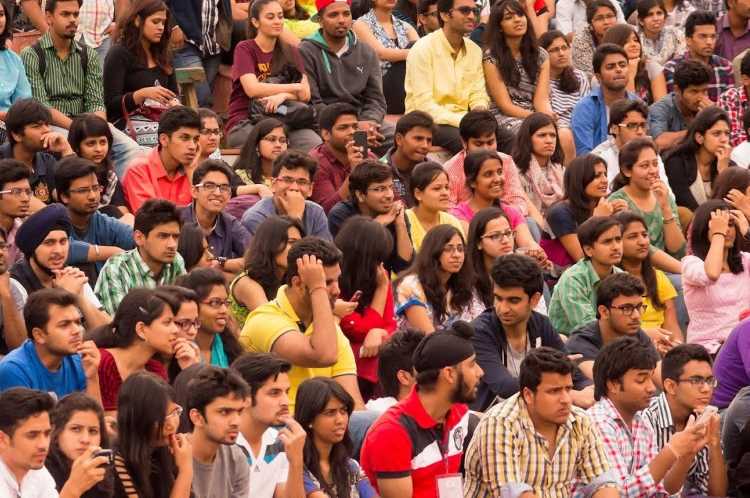The Union Budget 2025-26 made one of the most anticipated announcements in the form of income tax reforms aimed at reducing the burden on the middle class. This was part of the government’s strategy to enhance disposable income, thereby stimulating household consumption and savings. The budget also outlined 10 broad focus areas, with special attention given to the poor, youth, farmers, and women.
The budget for the financial year 2025-26 is set at Rs 50.63 lakh crore, reflecting a 7.4% increase over the revised estimate for FY24. This signals the government’s intent to ramp up spending in FY26, exceeding the planned expenditure of the previous year. The increased spending is expected to support demand and drive faster economic recovery.
To boost investment, the government has significantly enhanced the effective capital expenditure (capex) outlay by 17.44%, reaching Rs 15.48 lakh crore. This accounts for more than 4% of the estimated GDP, reinforcing the government’s commitment to infrastructure-led growth.
READ I Budget 2025-26: A pragmatic playbook for economic resilience
Budget 2025-26 focuses on youth
Among all developmental measures, empowering the youth is the most critical and urgent initiative. Emerging global trends — such as automation, generative AI, digitalisation, and climate change — necessitate equipping young Indians with the right skills to navigate these evolving challenges.
India is enjoying the benefits of demographic dividend, with nearly 26% of its population in the 10-24 age group. India has the highest young population globally. The nation’s economic future will be shaped by the quality and magnitude of reskilling, upskilling, and new skilling opportunities available to its youth.
Currently, India’s workforce has a low percentage of formally skilled workers — just 4.69% compared with 24% in China and 52% in the US. Over the years, government spending on education has ranged between 8.5% and 10.8% of total expenditure and 38-42% of social services spending. Addressing the aspirations of young people is crucial, otherwise this demographic dividend could become a liability.
Job creation and skill development
To fully harness the demographic dividend, job creation remains essential. The Economic Survey says that India must generate an average of 78.5 lakh non-farm jobs per year until 2030 to effectively absorb its growing workforce. The creation of quality employment opportunities remains a national priority, as it is vital for fostering inclusive and sustainable economic growth.
The latest Periodic Labour Force Survey (PLFS) data reveals that 90.2% of the workforce has education at or below the secondary level. Consequently, 88.2% of workers are engaged in low-skilled occupations. A strong correlation exists between education, job roles, and income levels. The PLFS data shows that while 4.2% of the workforce with advanced education earns between Rs 4 lakh and Rs 8 lakh annually, nearly 46% earn less than Rs 1 lakh, primarily consisting of low- and semi-skilled workers.
Government initiatives for skilling and education
The Budget 2025-26 includes several initiatives aimed at addressing these challenges:
- Establishment of five national centres of excellence.
- Expansion of capacity at Indian Institutes of Technologies (IITs).
- A new centre of excellence in artificial intelligence for education, leveraging global expertise and partnerships.
- These initiatives align with the government’s export promotion initiatives, ensuring the Indian workforce meets both domestic and global employment demands.
- Additionally, the Union Budget introduced a package of five key schemes benefiting 4.1 crore youth over five years, with a central outlay of Rs. 2 lakh crore. These include:
- Craftsmen Training Scheme at Industrial Training Institutes (ITIs)
- Pradhan Mantri Kaushal Vikas Yojana (PMKVY)
- PM Vishwakarma Yojana
- National Council for Vocational Education and Training
- National Apprenticeship Promotion Scheme (NAPS)
Further, policy reforms such as allowing Foreign Direct Investment (FDI) and External Commercial Borrowings (ECB) in higher education, establishing the Higher Education Commission (HEC) for accreditation and funding, allocating Rs 50,000 crore to the National Research Foundation (NRF), and implementing the National Education Policy (NEP) are all steps taken in this direction over the years.
Despite these efforts, challenges remain. The primary issue in India’s skill landscape is the mismatch between academic qualifications and job market requirements. The PLFS report 2023-24 indicates that only 4.9% of youth aged 15-29 years have received formal vocational or technical training, while another 21.2% have received informal training. Though there has been an improvement in skill levels across socio-economic classifications, the problem of underemployment persists—53% of graduates and 36% of postgraduates are employed in jobs below their educational qualifications.
Role of industry in skilling the workforce
Given the rapid pace of technological advancements — driven by automation, AI, and digitalisation — the government alone cannot meet the reskilling and upskilling needs of the workforce. Industry participation is essential for ensuring relevant and effective skill development. The dynamic and fast-changing nature of global economies necessitates a forward-looking policy framework that fosters industry-academia partnerships, continuous learning, and adaptive skill-building models.
Through this budget, the government aims to lay a robust foundation for a future-ready workforce by prioritising skill development, industry collaboration, and flexible learning models. While the announcements and initiatives mark a positive step, sustained efforts are required to ensure their successful implementation.
A well-skilled, employable workforce is the key to India’s sustained economic growth and global competitiveness. By addressing the challenges of job creation and skilling, the country can fully capitalise on its demographic dividend and pave the way for a prosperous and inclusive future.
Dr Harendra Nath Tiwari is Associate Professor, and Dr Shashank Vikram Pratap Singh is Assistant Professor at Shri Ram College of Commerce, University of Delhi.

